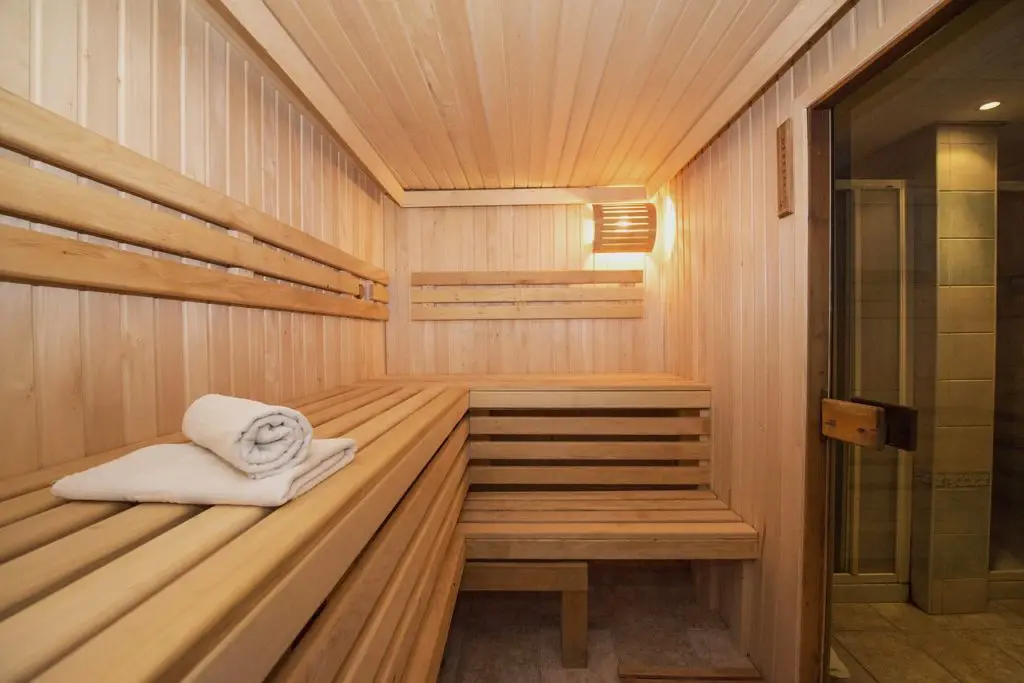Home saunas offer the benefits of a relaxing, soothing activity while studies have also shown that saunas give users an equivalent experience to cardiovascular exercise.
Before making a decision on whether to pay for a sauna installation, many consumers will want to know what the cost of operating a home sauna is. This article will answer the question ‘how much does a sauna cost to run?’
The heat and steam from a sauna are known for helping exfoliate the skin by enlarging pores and bringing oils, dirt, and toxins to the surface. In addition, there is evidence that regular sauna users have healthier cardiovascular and circulatory systems.
These benefits are usually enough to attract many people into the heat and steam, and some consumers have even decided to install saunas into their homes.
But saunas can use a lot of power. How much do they cost to run?
That depends on the type of sauna, and the amount of power required. This article will look cover that. And we also need to discuss the potential costs of installing dedicated electric power for a sauna.
After reading this article consumers should have a good idea of what the costs of operating a sauna are.
How Much Does A Sauna Cost To Run? The Short Answer(s)
Below is information on the operating costs of both electric saunas and infrared ones. While both saunas run on electricity, more traditional electric saunas do not have infrared heating elements, which are more efficient.
So overall, infrared saunas are cheaper to run than more traditional electric ones. The estimations of the actual operating costs for either kind are discussed below.
Electric Saunas
Electric steam saunas use hot elements to create steam when water is poured on hot sauna rocks. These types of saunas have become quite popular for their relative ease of operation compared to wood-burning saunas.
These types of saunas are easy to maintain too, and many users find the steam from them preferable to wood-burning sauna steam.
Moreover, the safety risks associated with electric steam saunas are much lower than those associated with saunas that burn wood.
The cost of using an electric sauna is also arguably lower than wood-burning ones. The price of using one for an hour or so each day per month is 80 to 150 dollars, depending on the cost of electricity.
Although these saunas are easy to use, they are not as energy efficient as infrared saunas, so operating costs might be about double compared to saunas with infrared heating.
Installation costs for Electric Saunas
Depending on the type of sauna stove you choose, you may land on a 110v or 220v stove. A 110v stove will plug into a standard electric outlet, and will be much cheaper to run.
A 220v stove will require a special plug that could cost upwards of $1000 to install. It also must be installed by a licensed electrician. And that 220v stove will draw a lot more power than a 110v will.
Of course, it will work a lot better, too!
Infrared Saunas
Infrared saunas are known to be more energy-efficient than traditional electric and wood-burning saunas. This is because infrared heat can directly heat occupants of a sauna rather than just the air around them.
See Types of saunas for more information.
Moreover, traditional saunas will take about thirty minutes to heat up after turning on, while infrared ones take only about ten minutes. They are also praised for the minimal fire risk compared to wood-burning and even electric saunas.
The cost of operating one of these (infrared) saunas ranges from about forty to seventy-five dollars, depending on the cost of electricity (per KWh) as well as the wattage of the given infrared sauna.
Smaller infrared saunas which only hold a couple of people typically have a wattage of below 1.6 kW.
This design allows standard power chords to be used with them. Larger saunas can have 3.0-4.0 wattages, which requires more special wiring and chords.
Conclusion
Saunas are relaxing environments that also provide muscle and skincare benefits, so it is no surprise that some consumers have decided to install them in their own homes.
This eliminates the need for travel to and from public saunas, which can often be inconvenient and, for various reasons, uncomfortable.
Home saunas provide users with superior control and comfort compared to public ones.
However many consumers are not sure how to calculate the costs of running home saunas. Although the cost of the sauna itself may be low, some people are surprised about the cost of electricity for running them, especially traditional electric ones.
These types of saunas can cost over one hundred dollars a month to use if used consistently. On the other hand, infrared home saunas are more energy-efficient, since they can heat occupants directly rather than just the air around them.
Costs of operating one of these saunas range from thirty-five to sixty-five or seventy dollars a month, depending on electricity prices. Moreover, the wattage of a given home sauna will also affect their cost to run.
Saunas that have a wattage below 1.6 kW use less energy and thus will be cheaper to run than bigger saunas with 3 or for kW.
After reading this article, anyone who enjoys a home sauna should be able to make a decision on the variety that is best for them and their finances.
And while you’re doing the math, be sure to include the possible cost of wiring and setting up the sauna. If you’re choosing a sauna with a 220v stove, installation costs will be much higher.






